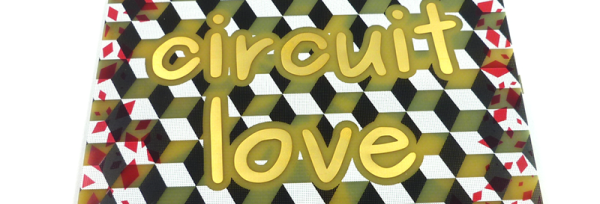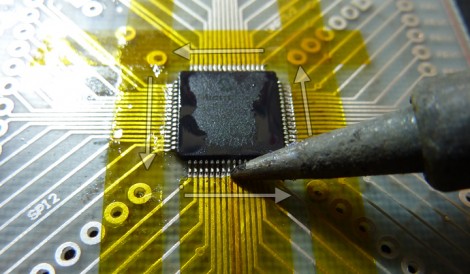The cheapest PCBs – and therefore most common – are green solder mask with white silkscreen. It works, but it’s also incredibly boring. This is the way things were done up until a few years ago with the explosion of board houses trying to compete for your Yuan, and now getting a red, yellow, black, blue, green, and even OSH purple is possible. This doesn’t mean multiple solder masks aren’t possible, as [Saar] demonstrates with his demonstration of multicolor solder masks and circuit love.
We’ve seen a lot of [Saar]’s designs, including a mixing desk, a cordwood puzzle, and an engineer’s emergency business card, but so far his artistic pieces have been decidedly monochromatic. For this build, [Saar] teamed up with Eurocircuits to create a board that exploits their capabilities.
Althought Eurocircuits has PCB PIXture, a tool for putting graphics on PCBs, [Saar] made this with his own tool, PCBmodE. The design of both the red and yellow variants are abstract, and only meant to be a demonstration of what can be done with multicolor solder mask. It looks great with five backlit LEDs, and with an acrylic top and bottom, makes a great coaster or art piece.
We like [Saar’s] work so much that we put his Cordwood puzzle in the Hackaday Store.

















